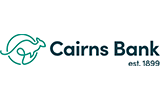CREDIT SCORE
Why checking your credit score is important
By Sean Callery
WE GIVE A BUCK about helping you find your the best debt consolidation loan.
Compare 90+ lenders – fast, easy & free
We show all the debt consolidation loans on our database (not just sponsored ones)
It’s transparent and fair, so you can compare with confidence
Personal Loan comparison guide created by our team of experts. Updated 1 Jan 2026.
Sponsored
Unsecured Loans to $100k

Interest rates from
5.95%
p.a.
Comparison rate^
5.95%
p.a.
Personalised rates that reward borrowers with good credit history. Fast, simple, easy quotes that don't impact credit score.
View detail
Loan purpose Loan amount | ||
 | Harmoney Personal LoanInterest rate from 5.76% To 24.03% p.a. (fixed) Comparison rate from 5.76% To 24.98% p.a. Money Score 4.41 out of 5 Repayments from $384.43 Per month for 5 years 3 - 7yr Loan Term $2,000 - $100,000 | Compare now on Money.com.au or visit site |
 | Horizon Bank Personal Loans Secured by DepositsInterest rate from 5.79% p.a. Comparison rate from 6.00% p.a. Money Score 3.88 out of 5 Repayments from $384.71 Per month for 5 years 1 - 30yr Loan Term $500 - $100,000 | Compare now on Money.com.au or visit site |
 | Horizon Bank Personal Loans Secured by MortgageInterest rate from 5.79% p.a. Comparison rate from 7.84% p.a. Money Score 3.16 out of 5 Repayments from $384.71 Per month for 5 years 1 - 30yr Loan Term $500 - $100,000 | Compare now on Money.com.au or visit site |
 | NOW Finance Unsecured Personal LoanInterest rate from 5.95% To 26.95% p.a. (fixed) Comparison rate from 5.95% To 26.95% p.a. Money Score 4.54 out of 5 Repayments from $386.19 Per month for 5 years 1 - 7yr Loan Term $5,000 - $50,000 | Compare now on Money.com.au or visit site |
 | NOW Finance Secured Personal LoanInterest rate from 5.95% To 21.65% p.a. Comparison rate from 5.95% To 21.65% p.a. Money Score 4.50 out of 5 Repayments from $386.19 Per month for 5 years 1 - 7yr Loan Term $15,000 - $100,000 | Compare now on Money.com.au or visit site |
 | OurMoneyMarket Unsecured Personal LoanInterest rate from 5.95% To 18.99% p.a. (fixed) Comparison rate from 5.95% To 21.76% p.a. Money Score 4.54 out of 5 Repayments from $386.19 Per month for 5 years 1 - 7yr Loan Term $5,000 - $75,000 | Compare now on Money.com.au or visit site |
 | MoneyMe Debt Consolidation LoanInterest rate from 5.99% To 24.49% p.a. (variable) Comparison rate from 6.70% To 25.87% p.a. Money Score 4.53 out of 5 Repayments from $386.56 Per month for 5 years 3 - 7yr Loan Term $5,000 - $70,000 | Compare now on Money.com.au or visit site |
 | Plenti Personal LoanInterest rate from 6.17% To 24.09% p.a. (fixed) Comparison rate from 6.17% To 25.08% p.a. Money Score 4.54 out of 5 Repayments from $388.24 Per month for 5 years 1 - 7yr Loan Term $5,000 - $65,000 | Compare now on Money.com.au or visit site |
 | Revolut Personal LoanInterest rate from 6.17% To 22.79% p.a. (fixed) Comparison rate from 6.17% To 22.79% p.a. Money Score 3.08 out of 5 Repayments from $388.24 Per month for 5 years 1 - 7yr Loan Term $5,000 - $50,000 | Compare now on Money.com.au or visit site |
 | ING Personal LoanInterest rate from 6.19% To 19.99% p.a. (fixed) Comparison rate from 7.03% To 20.78% p.a. Money Score 0.29 out of 5 Repayments from $388.43 Per month for 5 years 1 - 7yr Loan Term $5,000 - $60,000 | Compare now on Money.com.au or visit site |
 | Liberty Unsecured Personal LoanInterest rate from 6.30% To 19.99% p.a. (fixed) Comparison rate from 6.30% To 21.49% p.a. Money Score 4.34 out of 5 Repayments from $389.45 Per month for 5 years 3 - 7yr Loan Term $5,000 - $80,000 | Compare now on Money.com.au or visit site |
 | MoneyPlace Debt Consolidation LoanInterest rate from 6.30% To 7.24% p.a. (fixed) Comparison rate from 6.30% To 7.24% p.a. Money Score 4.66 out of 5 Repayments from $389.45 Per month for 5 years Up to $80,000 | Compare now on Money.com.au or visit site |
 | Newcastle Permanent Secured Personal loanInterest rate from 6.49% p.a. (fixed) Comparison rate from 6.84% p.a. Money Score 2.67 out of 5 Repayments from $391.23 Per month for 5 years 1 - 7yr Loan Term $2,000 - $100,000 | Compare now on Money.com.au or visit site |
 | Wisr Debt Consolidation LoanInterest rate from 6.49% To 24.29% p.a. (fixed) Comparison rate from 7.32% To 25.07% p.a. Money Score 4.43 out of 5 Repayments from $391.23 Per month for 5 years 3 - 7yr Loan Term $5,000 - $62,000 | Compare now on Money.com.au or visit site |
 | Cairns Bank Secured Loans - Real EstateInterest rate from 6.59% To 7.34% p.a. (variable) Comparison rate from 7.72% To 8.46% p.a. Money Score 3.21 out of 5 Repayments from $392.17 Per month for 5 years Up to 7yr Loan Term $3,000 - $25,000 | Compare now on Money.com.au or visit site |
 | Cairns Bank Secured Loans - Motor VehicleInterest rate from 6.59% To 7.34% p.a. (variable) Comparison rate from 7.72% To 8.46% p.a. Money Score 3.21 out of 5 Repayments from $392.17 Per month for 5 years Up to 7yr Loan Term $3,000 - $25,000 | Compare now on Money.com.au or visit site |
 | Liberty Secured Personal LoanInterest rate from 6.70% To 19.19% p.a. (fixed) Comparison rate from 6.10% To 20.77% p.a. Money Score 4.33 out of 5 Repayments from $393.20 Per month for 5 years 3 - 7yr Loan Term $5,000 - $80,000 | Compare now on Money.com.au or visit site |
 | Great Southern Bank Debt Consolidation LoanInterest rate from 6.99% To 19.99% p.a. (fixed) Comparison rate from 6.99% To 19.99% p.a. Money Score 3.43 out of 5 Repayments from $395.93 Per month for 5 years 1 - 7yr Loan Term $5,000 - $75,000 | Compare now on Money.com.au or visit site |
 | CommBank Fixed Rate Personal LoanInterest rate from 7.00% To 22.00% p.a. (fixed) Comparison rate from 8.05% To 22.88% p.a. Money Score 0.18 out of 5 Repayments from $396.02 Per month for 5 years 1 - 7yr Loan Term $4,000 - $50,000 | Compare now on Money.com.au or visit site |
 | CommBank Variable Rate Personal LoanInterest rate from 7.00% To 22.00% p.a. (variable) Comparison rate from 8.05% To 22.88% p.a. Money Score 0.15 out of 5 Repayments from $396.02 Per month for 5 years 1 - 7yr Loan Term $4,000 - $50,000 | Compare now on Money.com.au or visit site |
You’ve viewed 20 of 96 items |

Editor
Debt consolidation is the main reason most Australians apply for a personal loan, according to data from Money.com.au. More than half (51.92%) of all loan applications are for consolidating debt, with the average loan amount being $15,302. People typically choose to consolidate their debt to make repayments simpler and to reduce the amount of interest they pay. However, when consolidating debts like credit cards and personal loans that have high balances, the average interest rate on debt consolidation loans of 17.95% p.a. can still make it difficult to afford over the long term. This means that, even with consolidation, borrowers could face challenges in fully paying off their debts.
Portion of personal loan requests that are for debt consolidation
51.92%
Average debt consolidation loan amount request
$15,302
Average debt consolidation loan interest rate
17.95% p.a.
Average annual pre-tax income of applicants
$111,651
Debt consolidation loan amounts available
$2k - $100k
Source: Personal loan data from real Money.com.au customers and lenders
Here are some popular reasons why people take out debt consolidation loans:

A debt consolidation loan works like any other personal loan, but is designed to help you combine and pay off existing debts, rather than take on extra debt for a new purchase or expense. For example, credit card consolidation loans are a common option.
Some key features include:
Most lenders that offer personal loans can be used for consolidating debt. Like all personal loans, your application will be subject to the lender’s assessment criteria, including a credit check, income verification and an evaluation of your overall financial position. Your credit score, debt-to-income ratio and employment history will play a key role in the lender’s decision to approve or decline your loan application.
Let’s take the example of a person with a $7,000 credit card debt at an interest rate of 18%, plus a $3,000 personal loan at 15% interest with three years left on the loan term. Here’s the difference combining these debts into a debt consolidation loan at 14% interest over four years could make.
Credit card repayment | |
Current situation | $174/month |
Debt consolidation | $0 |
Personal loan repayment | |
Current situation | $104/month |
Debt consolidation | $0 |
Total repayment | |
Current situation | $278/month across two separate payments |
Debt consolidation | $273 in a single payment |
Total interest cost | |
Current situation | $4,294 |
Debt consolidation | $3,117 |
Interest saved | |
Current situation | |
Debt consolidation | -$1,177 |
| Current situation | Debt consolidation | |
|---|---|---|
Credit card repayment | $174/month | $0 |
Personal loan repayment | $104/month | $0 |
Total repayment | $278/month across two separate payments | $273 in a single payment |
Total interest cost | $4,294 | $3,117 |
Interest saved | -$1,177 |
See your estimated debt consolidation loan repayments per week, fortnight or month.

It helps to be organised before you apply for loans. Here's an idea of where to start.
Add up the balances of each to arrive at the total debt amount for consolidating. Make a note of the interest rate you’re being charged on each and how long the term is.
This will give you an idea of whether you’ll be eligible for a debt consolidation loan. If you’ve defaulted (missed repayments) on your current loans, you may not be eligible for a new loan.
Consider the loan amount, loan term, and the interest rates you're currently paying on your debts. Ideally, you'll want a loan with a lower interest rate and a shorter term. If you need help, think about using a personal loan broker who can guide you through a range of deals tailored to your needs and financial goals.
You’ll need to give the lender details about your existing loans by providing loan/credit card statements, as well as information about other aspects of your financial situation (e.g. income and expenses).
If you're approved, the lender will either give you the debt consolidation loan funds to pay off your other debts, or they will send the money directly to your other lenders to settle those debts.
Bonus tip: Make sure your existing debts are paid off in full and the accounts are closed so you’re not tempted to take on new debt.

Currently, the lowest interest rates for debt consolidation loans in Australia are between 5.00% and 6.00% p.a. But, not everyone will qualify for these rates, as lenders typically advertise their ‘best’ rates, which are only available to certain borrowers.
Borrowers with a good credit rating will usually be eligible for the cheapest debt consolidation interest rates. But rates for some individuals will be higher. For example, for bad credit debt consolidation loans, interest rates generally start from 15-20%.
To give you an idea of the rates real borrowers typically pay, the average interest rate quoted on a debt consolidation loan is 17.95% p.a., based on thousands of loan requests analysed by Money.com.au.
This is slightly higher than the overall average interest rate for all personal loan purposes (16.36% p.a.). But to put it into perspective, the average interest rate on credit card balances incurring interest is over 18%.
On top of your credit rating, factors like your income, employment status and whether the loan is secured or not could impact your loan interest rate.
| Loan | Interest rates from | Comparison rates from^ | Loan amounts |
|---|---|---|---|
| Harmoney Personal Loan | 5.76% | 5.76% | $2,000 - $100,000 |
| Horizon Bank Personal Loans Secured by Mortgage | 5.79% | 7.84% | $500 - $100,000 |
| Horizon Bank Personal Loans Secured by Deposits | 5.79% | 6.00% | $500 - $100,000 |
| NOW Finance Unsecured Personal Loan | 5.95% | 5.95% | $5,000 - $50,000 |
| NOW Finance Secured Personal Loan | 5.95% | 5.95% | $15,000 - $100,000 |
| OurMoneyMarket Unsecured Personal Loan | 5.95% | 5.95% | $5,000 - $75,000 |
| MoneyMe Debt Consolidation Loan | 5.99% | 6.70% | $5,000 - $70,000 |
| Plenti Personal Loan | 6.17% | 6.17% | $5,000 - $65,000 |
| Revolut Personal Loan | 6.17% | 6.17% | $5,000 - $50,000 |
| ING Personal Loan | 6.19% | 7.03% | $5,000 - $60,000 |
Here are Money.com.au's top tips for getting the best deal on a debt consolidation loan.

Look for a rate that’s lower than what you’re paying on your existing debts.
But when comparing loans, don't assume that a lender’s headline advertised rate will be the rate you pay. Your actual rate could be higher (see example).
This is why getting personalised rates from multiple lenders is important.

Consider all the fees you could end up paying on your debt consolidation loan. That means application and establishment fees, ongoing fees and early repayment fees. The loan’s comparison rate will include most of the loan fees. If you see a debt consolidation loan with a comparison rate that’s much higher than the interest rate, the difference is made up by fees (as the example shows).
Don't forget: you may also need to pay fees to your existing lenders to close off your debts as part of the debt consolidation process.
Choose your loan term carefully and factor it in when calculating the overall cost of your debt consolidation loan. A low regular repayment over a long term could end up costing you more than a high regular repayment for a shorter term. Use a debt consolidation loan calculator to see how a shorter term can reduce the total interest you pay over the life of the loan.
Look for options like a choice of weekly, fortnightly or monthly repayments, plus the ability to repay the loan early if you can afford to chip away at the balance with extra repayments. Just watch out for lenders that charge fees for this convenience.
Avoid adding to your debt by borrowing more than you need to cover the debts you are consolidating. Focus on clearing the existing debt.

You can apply for a debt consolidation loan in Australia if you are:
Lenders will also look closely at your financial situation before deciding if you’re eligible. They'll consider:
The lender will ask to see evidence such as bank statements and payslips to demonstrate your financial position.
A debt consolidation loan can be a way to take back some control over your situation. But it’s not always the right solution according to David Berry, Chief Executive Officer of Way Forward, a not for-profit-organisation that helps Australians deal with their debt.
“People struggling financially usually have less planning or structure to manage their debts. Personal loans on the other hand have a fixed repayment,” David explains.
“Generally once a structured repayment arrangement is in place, the more people see the debt reducing and the faster they make the payments to clear the debt. It’s not true for everyone but it has been the general trend we have observed.”
According to David, there’s a big difference between how a debt consolidation loan can help in theory and knowing whether it is the right solution for you.
People can “rely too heavily on a lender’s view,” he said. “If the lender approves it, then it must be ok? But that isn’t necessarily the case.”
Instead he said borrowers should look at their own budget to figure out if the new loan is affordable in the long run.
"Talk to a financial counsellor or the National Debt Helpline (1800 007 007) to see what other options you might have available. Having an independent person to help you can do wonders for your confidence and your ability to come up with something realistic for your circumstances", David recommends.


Unlike debt consolidation, with payment consolidation you keep the debts separate but arrange them so that all the payments are made at the same time each week, fortnight or month.
This way it seems like you have a single repayment.
You could also negotiate with the individual lenders on the repayment amounts at the same time if needed.
There's no minimum credit score for getting a debt consolidation loan in Australia. But some individual lenders (particularly the major banks) may have limits.
Whether or not your application is approved will come down to a combination of factors. For example, if you can demonstrate that you will be able to comfortably meet the loan repayments, you may be approved for a debt consolidation loan, even with a bad credit score.
But your credit score will likely impact what interest rate you pay.
Here's an estimate of how different credit score levels (based on how credit reporting company Equifax groups them) could impact your interest rate:
Not usually. Provided you meet the lender’s credit criteria, your debt consolidation loan should have a similar interest rate to comparable personal loan products.
Every case is different and the answer to this question will depend on your home loan and the debts you're consolidating.
However, because home loans generally have longer terms than other forms of household debt, consolidating other debts into your mortgage could end up costing you more in the long run.
If you're eligible for the loan, the application process for a debt consolidation loan can be quite quick and straightforward. It’s similar to refinancing a personal loan.
With most lenders you can complete the process online and your loan could be approved and funded the same day in some instances.
For borrowers with more complicated circumstances, such as having bad credit, it can take longer and you may need to provide additional evidence to support your application.
Self-employed borrowers may need to follow a different process to prove their income and this could take longer.
Consolidating your debt requires a new credit application which may have a short-term impact on your credit score. However, if consolidating your debt makes repaying your debt more manageable (and less likely you will miss repayments), this may help you pay off your debt faster which could help improve your credit score in the long-run.
Compare multiple lenders at once.
Loan Amount
Comparison rate is based on an unsecured personal loan of $30,000 repaid over 60 months. Terms, conditions and credit criteria apply. Fees and charges for late or defaulted payments may apply. WARNING: The comparison rates shown are true only for the examples given and may not include all fees and charges. Different terms, fees or other loan amounts might result in a different comparison rate.
Check with the provider for full loan details, including rates, fees, eligibility and terms and conditions to make sure the product is right for you.
For offers from Money.com.au lending partners, we will match you with lenders and rates based on the information you provide us. This won't affect your credit score. Some lenders displayed are not current Money.com.au partners and we can't guarantee rates from a specific lender.
General information only The information on this page is general in nature and has been prepared without considering your objectives, financial situation or needs. You should consider whether the information provided and the nature of any personal loan product is suitable for you and seek independent financial advice if necessary.
We are not providing you with a recommendation or suggestion about a particular personal loan. You should read the relevant disclosure statements or other offer documents before deciding whether to apply for or continue to use a particular product.
What products, features and information are shown While we make every effort to ensure all personal loans available in Australia are shown in our comparison tables, we do not guarantee that all products are included. Our product comparisons may not compare all personal loan features and attributes relevant to you.
Product information, such as interest rates, fees and charges, is subject to change without notice. We include a link to each provider on our table for you to also be able to see the relevant product information direct with the lender.
How personal loans are sorted and filtered by default Users can easily change the sort order and apply product filters to our product comparison tables. However, when you arrive on a page initially, by default personal loans are sorted by:
Our tables feature all personal loans available from lenders on our database that match the search criteria selected. Lenders do not pay to feature in our tables, nor do we earn commission if you click to visit a lender’s website. The order of the products in the table is not influenced by any commercial arrangements.
If you get a personal loan as a result of visiting this page, we may earn a commission.
Our experts have formulated a unique Money Score and apply it to every Personal Loan on our database. It’s designed to give borrowers a broader idea of the quality of the loan, based on its comparison rate (which factors in the interest rate and most fees) and customer reviews for the provider.
Here’s how the Money Score is calculated on Personal Loans:
Important: Our Money Score is designed as a general guide for consumers only and scores are calculated without considering your objectives, financial situation or needs.
The Money Score applied to a Personal Loan is not a recommendation and should not be relied on as the sole factor to consider when choosing a product. The Money Score does not consider all aspects of a Personal Loan and may exclude factors that are important to you.